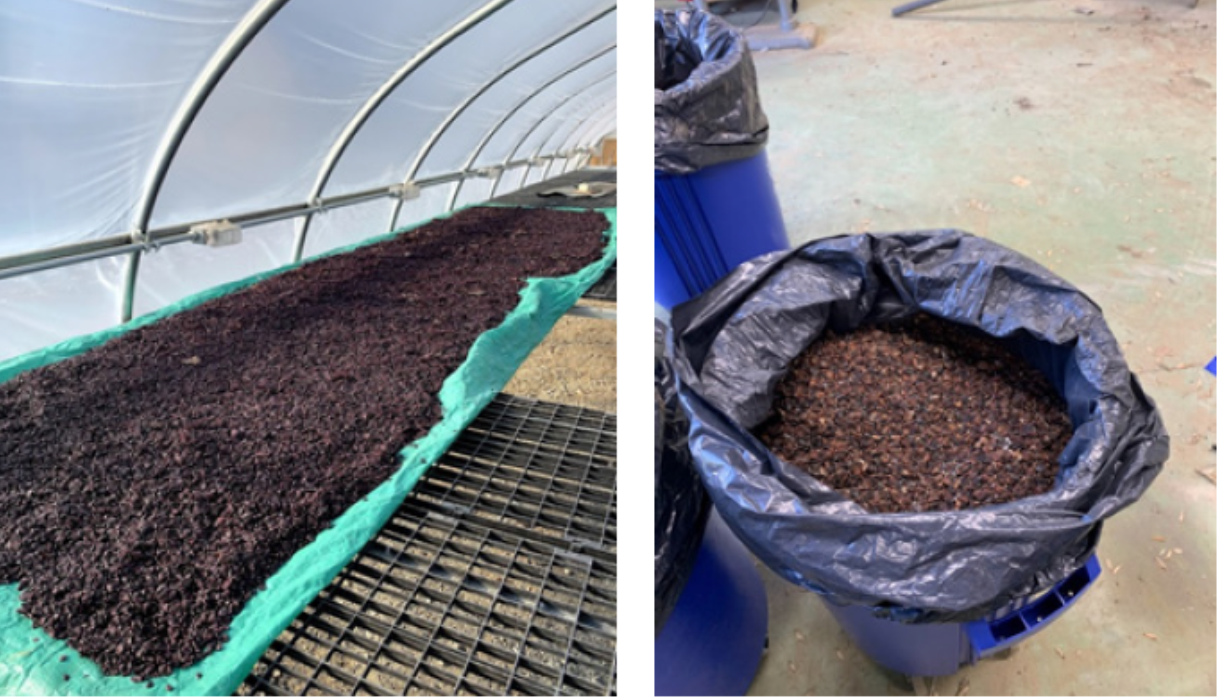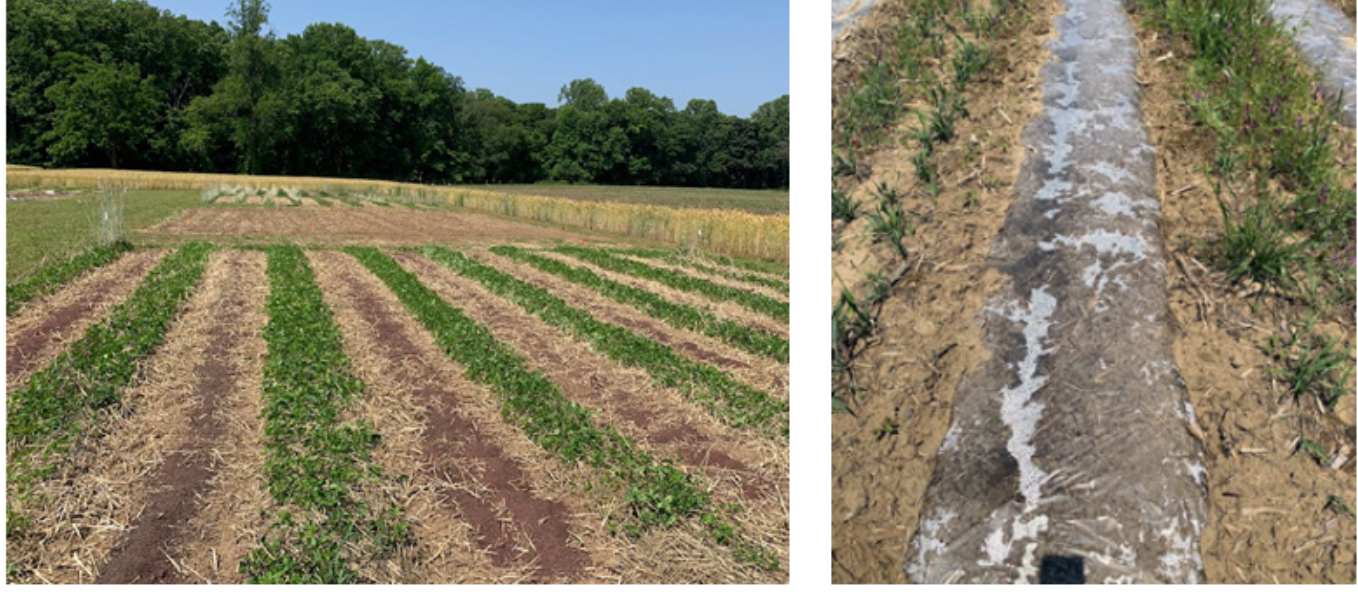Utilizing Biosolarization, Cover Cropping and Strip Tillage as an Integrated Weed Management Technique in Vegetables
Dwayne Joseph - University of Maryland Extension Educator, Kent County
Alan Leslie – Center Director WMREC, CMREC, LESREC, University of Maryland
Kurt Vollmer - University of Maryland Extension Specialist, Weed Management
Cerruti Hooks - Professor Department of Entomology, University of Maryland
Vegetable farmers face challenges due to the limited availability of herbicides registered for vegetables compared to row crops. Additionally, existing herbicides often fail to provide full-season weed control and may pose risks of crop injury if not applied correctly. Organic farmers, in particular, encounter significant obstacles as they rely heavily on manual and mechanical weed control methods, consuming substantial time and labor resources. To address these challenges, we developed a novel approach that integrates biosolarization, strip tillage, and living mulch systems. Biosolarization is a method similar to solarization but includes the incorporation of organic amendments into the soil before the passive solar heating process. As the moist soil undergoes heating, the organic material decomposes, releasing allelochemicals and other biotoxic compounds into the soil. Following the 14-day biosolarization process, the transparent plastic mulch is removed, and the soil is aerated for seven days before crop transplant. Biosolarization presents a promising option for integrated weed management (IWM). Research has shown that it can enhance weed seed mortality, reduce soil pathogens and is compatible with organic farming. While biosolarization has received limited attention compared to soil solarization, its potential synergies with conservation tillage (strip-tillage) and cover cropping (living mulch) remain largely unexplored.
Fruit processing by-products (pomace) are promising soil amendments for biosolarization because they are rich in organic compounds, don’t pose any biohazard safety risks, and can be relatively abundant and inexpensive (Figure 1). In this study, the biosolarization potential of grape pomace combined with a living mulch was investigated as an IWM technique. We hypothesized that biosolarization would reduce the growth and establishment of weeds. Furthermore, the study objectives were to demonstrate the use of biosolarization, conservation-tillage and cover cropping to: 1) reduce nematode, weed and insect pests, 2) enhance crop growth and marketable yield, and 3) improve soil quality and health.
Methods
Treatments were organized in a randomized complete block split-plot design and were replicated four times. The whole plot treatments included summer squash and okra grown under the following conditions: 1) in living mulch with no-till (LM-NT), 2) interplanted with cover crops (LM), 3) grown in solarized soil (Sol), or 4) interplanted with a cover crop and grown in biosolarized soil (Biosol). To assess the direct impact of whole plot treatments on cash crop growth and yield in the absence of weeds, half of all plots were kept weed free by manual weeding throughout the growing season.
Fall plot preparation – In early fall, red clover + cereal rye mixture was planted in Biosol, Sol and LM treatment plots at 6-inch row spacing. In LM-NT plots, the red clover and cereal rye was seeded in separate, alternating rows. One row of red clover was planted at each border and internal rows were alternated between six rows of cereal rye and four rows of red clover.
Spring plot preparation – In Biosol plots, the entire plot was mowed, the within-row areas (where the cash crops were transplanted) was strip rotovated 40-inches wide. Grape pomace was spread onto the soil surface and incorporated (rotovated), then transparent plastic tarp and drip lines were laid in rotovated zones (Figure 2). The biosolarization process proceeded for 24 days then the plastic tarp was removed and the soil was remediated for seven days before cash crop transplant. In LM-NT plots, the cereal rye was terminated with a roller crimper. In Sol plots, the entire plot was mowed and rotovated. The transparent plastic tarp and drip lines were laid in intra-row areas. In LM plots, the entire plot was roller crimped to terminate cereal rye. The within-row areas were strip-rotovated (40-inches wide) prior to transplanting the cash crops. Four rows of summer squash and four rows of okra seedlings were transplanted into all plots on the same day with a within and between-row spacing of 4 ft and 5 ft, respectively. Organic fertilizer was applied (side-dressed) according to crop nutrient requirement throughout the season.
Data Collection – Individual weed counts (species & number) were taken at 2, 4, 6 and 9 weeks after planting (WAP) from eight randomly (two within- and between-row for both cash crops) placed 100 sq-inch quadrats within each plot. Yield data was recorded from plants within the two internal rows of each cash crop.
 Figure 1. Left, Wet grape pomace undergoing drying, and Right, grape pomace after drying prior to application.
Figure 1. Left, Wet grape pomace undergoing drying, and Right, grape pomace after drying prior to application.
Results & Discussion
The data from the 2023 growing season is still undergoing statistical analysis, so it won’t be presented in this report. However, preliminary results indicate that Biosol plots had a low within-row weed density, particularly during early-season sampling times, compared to other treatments. This aligns with 2022 trial results, where biosolarization effectively inactivated broadleaf weed seeds but had minimal control over nutsedge due to its vegetative reproduction and high field pressure. Transitioning to a field with lower nutsedge pressure in 2023 resulted in reduced nutsedge infestations. However, biosolarization's ineffectiveness against vegetatively propagated weeds was evident in 2022 data. Grass weeds like foxtails, crabgrass, and goosegrass were initially controlled by biosolarization but showed decreased efficacy by the final rating, a trend consistent with preliminary findings from 2023. LM-NT plots demonstrated good within-row weed suppression due to cereal rye mulch, suggesting it as a superior weed management tactic compared to strip tillage used in LM plots. Additionally, the presence of a red clover living mulch between cash crop rows in Biosol, LM, and LM-NT plots showed promising weed suppression abilities resulting in low weed numbers. Preliminary findings, along with 2022 data, suggest biosolarization as a viable weed management option within crop rows and an effective IWM technique in organic vegetable production. Future work will include performing an additional trial year. Subsequently, we will explore different pomace sources, soil amendment rates, and optimize the timing and duration of the biosolarization process.
 Figure 2.A Grape Pomace
Figure 2.A Grape Pomace